Description
AJA Real Time HDR/WCG Conversion with the Colorfront Engine™ Video Processing
Frame Sync
Overview
FS-HDR, a 1RU, rackmount, universal converter/frame synchronizer, is designed specifically to meet the High Dynamic Range (HDR) and Wide Color Gamut (WCG) needs of broadcast, OTT, production, post, and live event AV environments, where real time, low latency processing and color fidelity is required for 4K/UltraHD and 2K/HD workflows. Developed in partnership with Colorfront, the FS-HDR’s HDR/WCG functionality is powered by Colorfront Engine™ proprietary video processing algorithms.
In Single Channel Mode, FS-HDR also serves as a full, 1-Channel up, down, cross-converter for 4K/UltraHD/2K/HD HDR/WCG transformation. In 4-Channel Mode, FS-HDR offers 4 independent channels of 2K/HD HDR/WCG transformations as well as up, down, and cross conversions.
FS-HDR Colorfront Engine TV Mode
TV Mode is an operational mode that provides a simple to use transform selection interface with minimal controls required for live television production. It addresses color correction and camera correction while adding two new controls essential for HDR/SDR transforms. These new controls are for Knee Point and Knee Slope and they help to manage highlights and roll-off in HDR to SDR and HDR to SDR conversions. They also improve the quality of the SDR output by using more of the information available in the HDR program. Shouldn’t your SDR deliverable benefit from all the effort put into your HDR production?
The Colorfront Engine uses conversion algorithms based on the human visual system that provide better SDR to HDR color transformation as well, improving the overall look of SDR sources used in your HDR production. To protect and maintain color fidelity of SDR brand colors used in graphics or in-camera, the combination of SDR to HLG and HLG to SDR transforms using the Colorfront Engine TV Mode provides the necessary “round-tripping” capabilities.
A perceptual transform integrates the various human perceptual phenomena into a model or perceptually linear transform space. Unique to the FS-HDR Colorfront Engine TV Mode, transforms are calculated in this perceptual space. Dynamic range, surround illumination, color volume, perceived saturation, and perceived hue are accounted for.
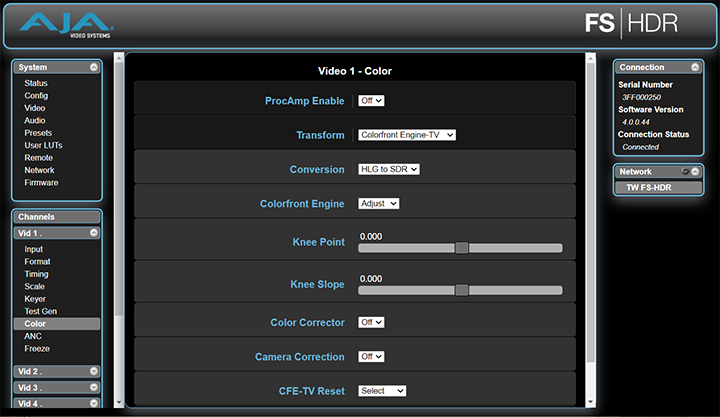
FS-HDR for Real Time HDR Workflows
Deliver more immersive content to audiences with the power and flexibility of AJA FS-HDR. See how FS-HDR and the Colorfront Engine can simplify real time HDR/WCG transformations and makes it easy to maintain the look you’ve worked to achieve across SDR to HDR, HDR to HDR, and HDR to SDR for both 4K and HD needs.
Learn more about the device’s extensive capabilities, including extensive camera log translations and more.
Real Time HDR Converter
The pursuit of High Dynamic Range (HDR) is the dream of getting closer to the Human Visual System (HVS) in all that we experience as viewers. FS-HDR has been designed to get us all there faster with a low profile, stand-alone, and real time device uniquely designed to bridge SDR to HDR, HDR to SDR, and HDR to HDR, all in real time.
HDR Conversions:
- HDR to HDR
- SDR to HDR
- HDR to SDR
WCG Conversions:
- BT.709 and BT.2020
Up and Down Conversion examples:
- Converting HD SDR BT.709 sources to UltraHD HDR BT.2020
- Converting UltraHD HDR BT.2020 sources to HD SDR BT.709 or HD HDR BT.2020
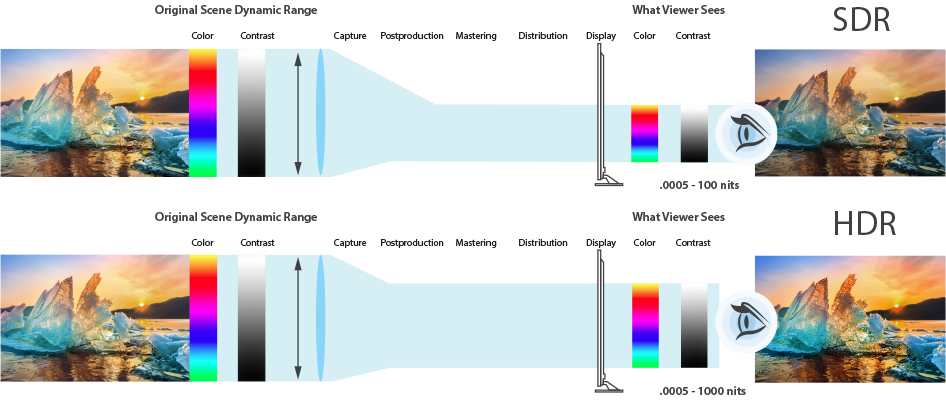
Configurable Frame Delay
As sports fans have come to expect a more dynamic, interactive experience, augmented reality (AR) is quickly becoming a common and valuable production asset, but one that requires additional video processing time. For seamless integration of AR into live productions, larger frame buffering capacities are required to delay other sources.
FS-HDR offers the largest configurable frame delay in its class of up to 20 frames per channel, ensuring all sources stay in time.
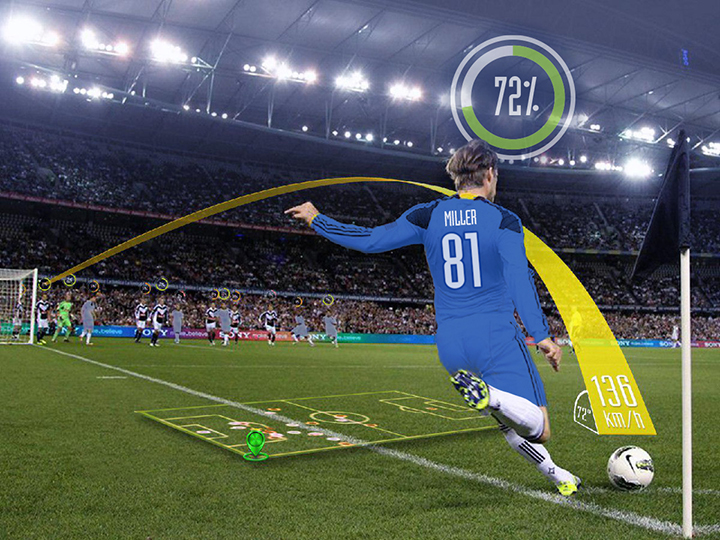
FS-HDR Key Features
- HDR to HDR, SDR to HDR and HDR to SDR conversions for Dynamic Range and Wide Color Gamut needs.
- Support for two Operational Modes:
- Single Channel Mode for 4K/UltraHD or 2K/HD frame sync and conversion including HDR conversions
- 4K/UltraHD/2K/HD/SD video processing and up, down, cross-conversion
- A full range of I/O options for 4K/UltraHD including Quad 1.5G; Dual 3G; and Quad 3G, 6G and 12G over a range of Coax and optional Fiber choices
- Enhanced Single Channel Mode offers the ability to simultaneously output 4K/UltraHD and 2K/HD with their own independent HDR transform settings for convenient Single Master HDR workflows.
- Four Channel Mode for simultaneous independent 2K/HD/SD frame sync and conversion including HDR conversions
- 2K/HD/SD up, down, cross-conversion
- SD/SD aspect ratio conversion
- HD/HD cross-conversion (720p/1080i)
- Single Channel Mode for 4K/UltraHD or 2K/HD frame sync and conversion including HDR conversions
- Each processing channel can independently select from:
- Colorfront Engine TV Mode
- Colorfront Engine Live Mode
- Colorfront Engine Film Mode
- BBC HLG LUT Mode
- NBCU LUT Mode
- User LUT Mode
- Dynamic LUT Mode
- 33 point Tetrahedral 3D LUT Processor supporting:
- Built-in BBC HLG 3D LUTs
- NBCU 3D LUTs
- User 3D LUTs
- Dynamic 3D LUTs through 3rd party applications
- Widely interoperable with 4K/UltraHD/2K/HD raster support, SQD and 2SI mapping conversion, P, PsF and Interlace support
- Configurable HDR settings for SDI output VPID
- HDR Color Bar Test Patterns
- HDMI HDR Infoframe generation to support HDR displays per HDMI v2.0b/CTA-861-G for any 2K/HD HDMI output format and 2K/HD output down-scaled from 4K/UltraHD
- Audio I/O processing with a 272 x 208 matrix of audio possibilities; support for a flexible range of audio feeds from discrete AES to MADI and embedded SDI audio, with each audio input offering sample rate conversion
- Simple operation, a redesigned FS menu structure and quick access to features via front panel buttons, as well as a web-based UI offering control over a LAN or across the web via a REST API
- A 1RU frame offering space, power and cost efficiencies ideal for broadcast trucks, postproduction or broadcast settings
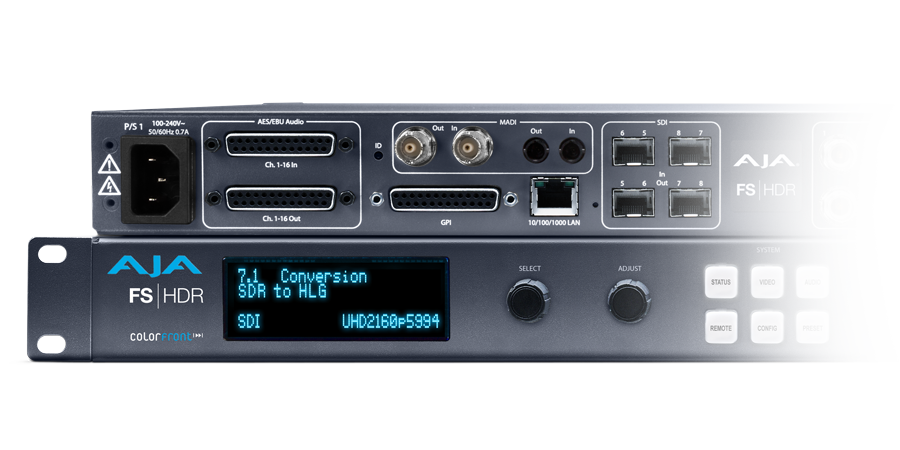
Colorfront Engine™
Maintaining Perceptual Integrity
FS-HDR’s HDR/WCG capabilities leverage video and color space processing algorithms within the Colorfront Engine, specially licensed by AJA from Colorfront, and developed by Colorfront’s CTO Bill Feighter and Lead Engineer Tamas Perlaki.
Powered by the Colorfront Engine, FS-HDR’s extensive HDR and WCG processing support enable real time processing of a Single Channel of 4K/UltraHD/2K/HD including down-conversion to HD HDR or up to four channels of 2K/HD simultaneously. FS-HDR also enables the conversion of popular camera formats from multiple vendors into the HDR space, plus conversion to and from BT.2020/BT.709 as needed, critical for the widespread acceptance of HDR alongside SDR in broadcast and OTT workflows.
Colorfront Engine TV Mode provides specific conversions and simplified controls for highlight and roll-off management in live television broadcast productions.
Colorfront Engine Live Mode provides conversions and controls that support live applications such as broadcast, OTT, A/V, and venue.
Colorfront Engine Film Mode provides conversions and controls, including ASC CDL, for applications such as on-set camera preview and look creation.
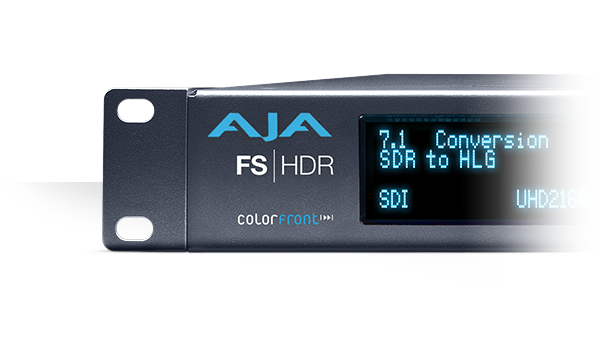
Parametric Controls for HDR Transforms and Color Correction
FS-HDR provides parametric controls for Colorfront Engine’s HDR transforms and color correction in Live, TV and Film Modes. Each parametric control is accessible via FS-HDR’s front panel, the web GUI on any browser, or REST interface, and settings can be stored to a preset for recall later or copied to other FS-HDR units.
Colorfront Engine parametric controls enable the following:
- TV Mode:
- Adjusting R,G,B, and Master color controls for:
- Lift, Gamma, and Gain
- Highlight and roll-off management with Knee Point and Knee Slope controls
- Adjusting for camera correction with Exposure, Color Temp, and Tint
- Adjusting R,G,B, and Master color controls for:
- Live Mode:
- Adjusting R,G,B, and Master color controls for:
- Lift, Gamma, and Gain
- Adjusting R,G,B, and Master color controls for:
- Film Mode:
- Adjusting R,G,B, and Master color controls for:
- Slope, Power, and Offset
- Adjusting R,G,B, and Master color controls for:
- Adjusting Saturation
- Guiding the algorithm’s color volume expansion from SDR to HDR
- Adjusting for the Ambient Light in the mastering or viewing environment
- Managing how SDR highlights and speculars are expanded into HDR
- Controlling the overall look of camera log inputs between cinematic and television
- Adjusting for camera correction with Exposure, Color Temp, and Tint
- PQ Output Nit Level adjustment from 48 to 4000 Nit
- DCI P3 Color Space Clamp for PQ output
- Support for ITU BT.2408-0, Operational Practices in HDR Television Production.
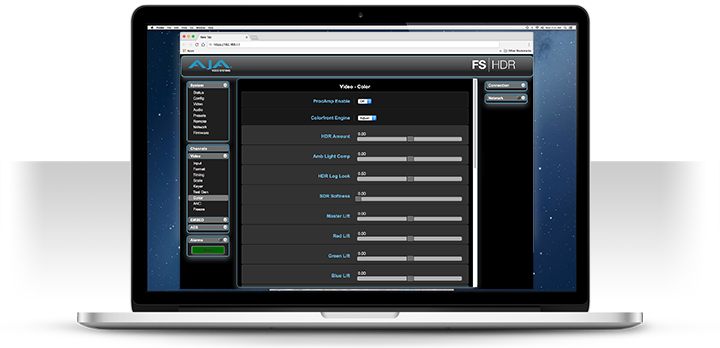
Real Time Camera LOG Conversions
FS-HDR can take incoming imagery from some of the most popular professional cameras in the world today and convert their LOG output in real time to 4K/UltraHD or 2K/HD and output as either HDR or SDR. This greatly simplifies workflows in a mixed camera environment and provides for a unified input workflow to HDR or SDR capable switchers and more. Additionally, FS-HDR provides the ability to convert to Sony S-Log3 S-Gamut on output from any of these sources for workflows requiring this Log feed to compatible switchers and more.
- Sony S-Log3 S-Gamut3
- Sony S-Log3 S-Gamut3 Cine
- Sony S-Log3 BT.2020
- ARRI LogC Wide Gamut
- Panasonic Vlog
- RED Log3G10 Wide Gamut
- Canon Log2
- Canon Log3
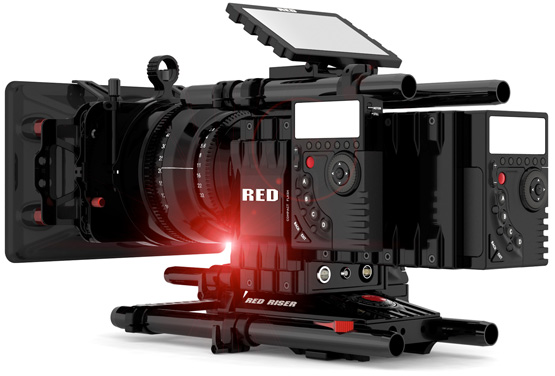
ACES Support
The Academy Color Encoding System (ACES) is becoming an industry standard for managing color throughout the life cycle of a motion picture or television production. From capture through editing, VFX, mastering, public presentation, archiving, and future remastering, ACES ensures a consistent color experience that preserves the creative vision.
FS-HDR offers an ACES Grading Color Space with ACEScct Input and Output Dynamic Ranges for real time integration with ACES workflows.
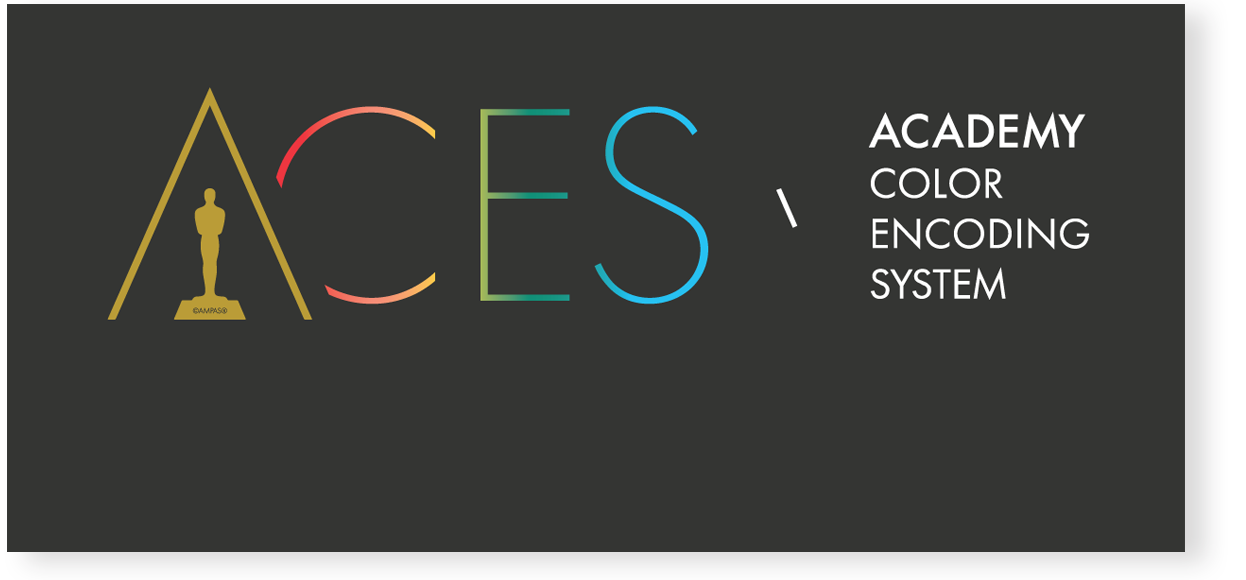
LOOKs
Colorfront Engine in Film Mode offers built-in LOOK selection including film stock emulation and popular aesthetic looks, valuable tools for on-set and episodic production and you can even mix between any two for unique specific aesthetic needs:
- LOOK
- Look A or B Select
- MasterLook
- MasterBroadcast
- MasterLookBright
- MasterLookCool
- MasterLookLowCon
- MasterLookSoftColor
- MasterLookVivid
- MasterLookWarm
- MasterPastelD60
- MasterPastelD65
- Agfa
- ARRI K1S1
- Bleach
- ClassicFilm
- Ektachrome
- FilmBlended
- FilmBlendedLoCon
- FujiDI
- FujiXD
- GenericFilm
- Kodachrome
- ReversalClassic
- A/B Mix
- Look A or B Select
Inputs: Dynamic
Range/Color Gamut
- SDR BT.709 100 Nits
- SDR Extended BT.709
- PQ BT.2020 1000 Nits
- PQ P3D65 1000 Nits
- Hybrid Log Gamma BT.2100
- HLG Extended BT.709
- HLG Extended BT.2100
- Sony® S-Log3 S-Gamut3
- Sony S-Log3 S-Gamut3 Cine
- Sony S-Log3 BT.2020
- ARRI Log C Wide Gamut
- Panasonic® V-Log
- RED Log3G10 Wide Gamut
- Canon Log 2
- Canon Log 3
- ACEScct
Outputs: Dynamic Range/Color Gamut
- SDR BT.709 100 Nits
- SDR Extended BT.709
- PQ BT.2020 1000 Nits
- PQ P3D65 1000 Nits
- Hybrid Log Gamma BT.2100
- HLG Extended BT.709
- HLG Extended BT.2100
- Sony S-Log3 S-Gamut3
- Sony S-Log3 BT.2020
- ARRI Log C Wide Gamut
- ACEScct
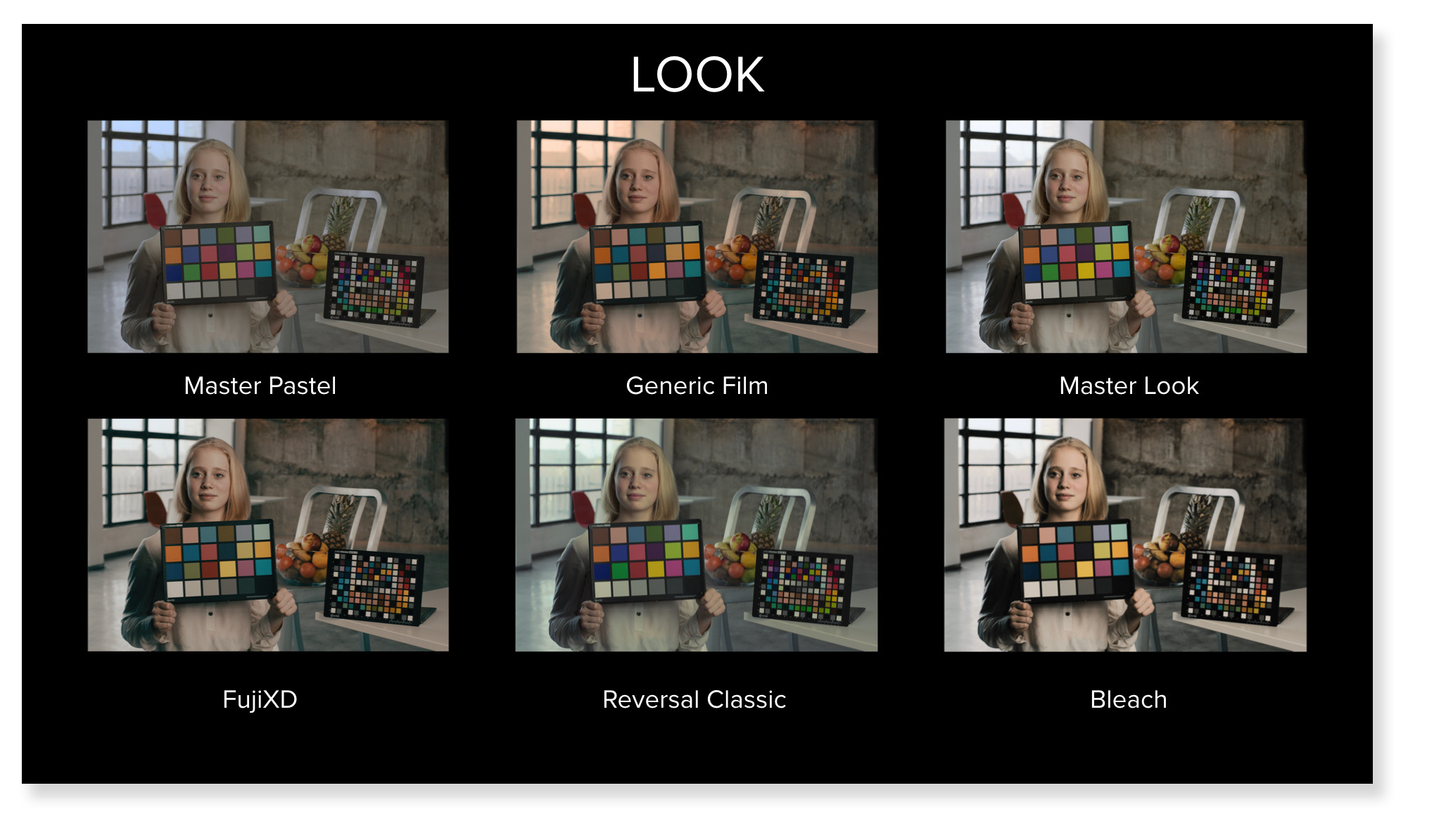
BBC HLG LUTs Mode
BBC HLG LUTs Mode offers additional functionality that adds HDR conversion options, particularly for television broadcasters who are looking for specific conversion criteria.
- Supports mathematical HLG HDR dynamic range mapping per ITU BT.2408
- Scene-light and Display-light conversions
- SDR, PQ, and S-Log3 to HLG
- HLG to SDR and PQ
- Utilizes 33 point Tetrahedral 3D LUT Interpolation
BBC HLG LUT Conversions
- SDR Scene Referred (SR) to HLG
- SDR Scene Referred (SR) to HLG Strict
- SDR Scene Referred (SR) UpMap to HLG
- SDR Scene Referred (SR) UpMap to HLG Strict
- SDR Display Referred (DR) to HLG
- SDR Display Referred (DR) UpMap to HLG
- SDR BT.2020 Display Referred (DR) to HLG
- SDR BT.2020 Display Referred (SR) UpMap to HLG
- PQ 1000 Nits Display Referred (DR) to HLG
- PQ 4000 Nits Display Referred (DR) to HLG
- S-Log3 100% Scene Referred (SR) to HLG
- S-Log3 200% Scene Referred (SR Live) to HLG
- HLG to SDR Scene Referred (SR)
- HLG to SDR Scene Referred (SR) Strict
- HLG to SDR Display Referred (DR)
- HLG to SDR Display Referred (DR) Super White
- HLG to PQ 1000 Nits Display Referred (DR)
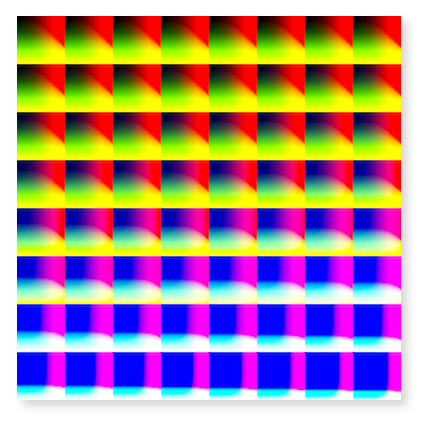
Single Master HDR Workflow Using BBC HLG LUTs
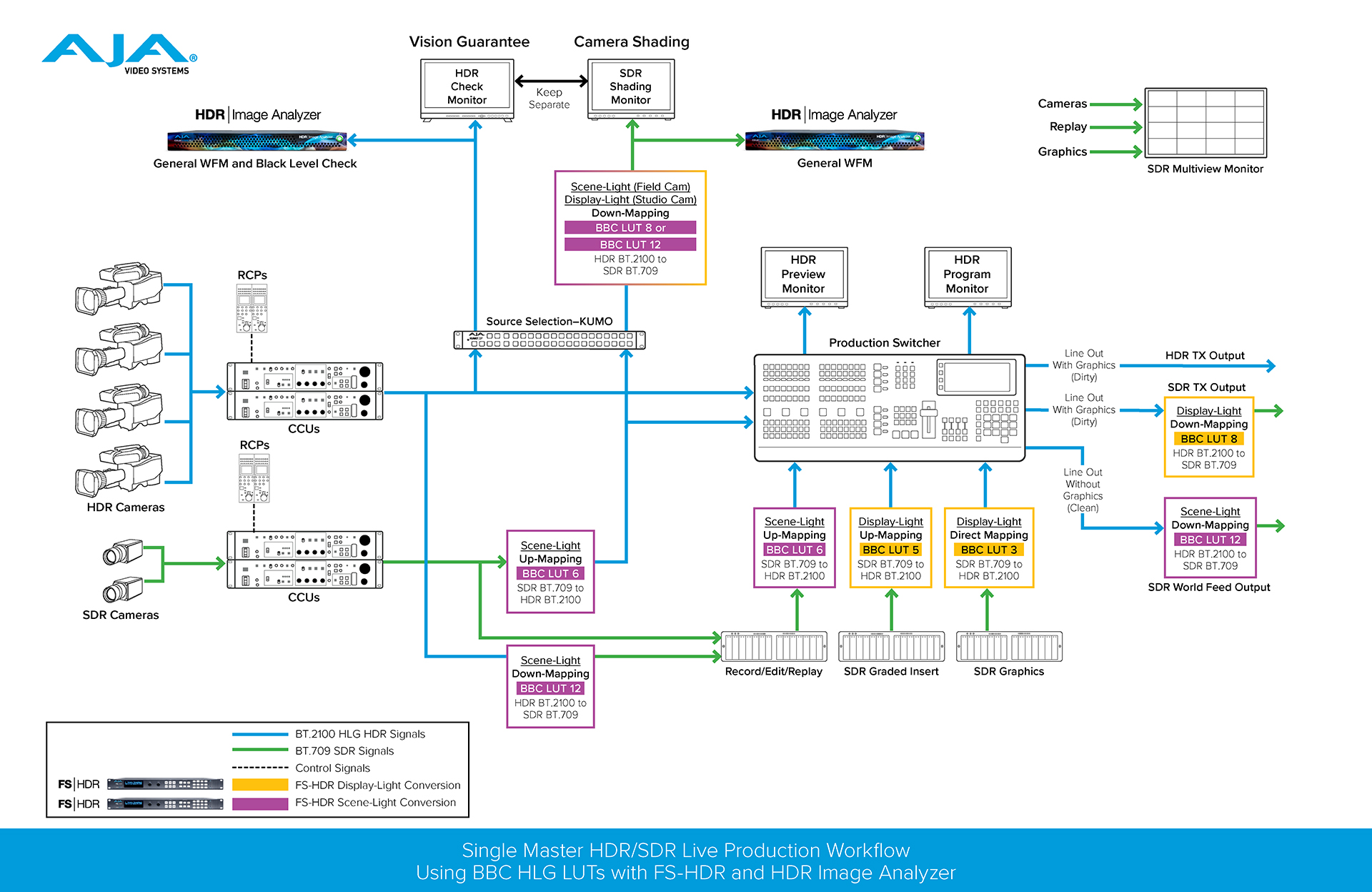
NBCU LUTs Mode
NBCU LUTs, developed by NBCUniversal Media, LLC in collaboration with Cromorama, enable a workflow for single-master live production of simultaneous HDR and SDR content. Designed for television broadcasters, NBCU LUTs include SDR, HLG and PQ LUTs that maximize the dynamic range and color volume in HDR, without compromising core SDR broadcasts.
- Imperceptible round-tripping of SDR BT.709
- Conversions designed with a knee that is natural with latitude for live video shading
- Scene-light and Display-light conversions
- SDR, HLG, and PQ conversions
- Utilizes 33 point Tetrahedral 3D LUT Interpolation
NBCU LUT Conversions
- 1-NBCU_SDR2HLG_DL_v1, SDR UpMap to HLG using Display Light
- 2-NBCU_SDR2HLG_SL_v1, SDR to HLG using Scene Light
- 3-NBCU_HLG2SDR_DL_v1.1, HLG to SDR using Display Light
- 4-NBCU_SDR2PQ_DL_v1, SDR UpMap to PQ using Display Light
- 5-NBCU_PQ2SDR_DL_v1, PQ to SDR using Display Light
- 7-NBCU_HLG10002PQ_v1, HLG 1000 Nits to PQ
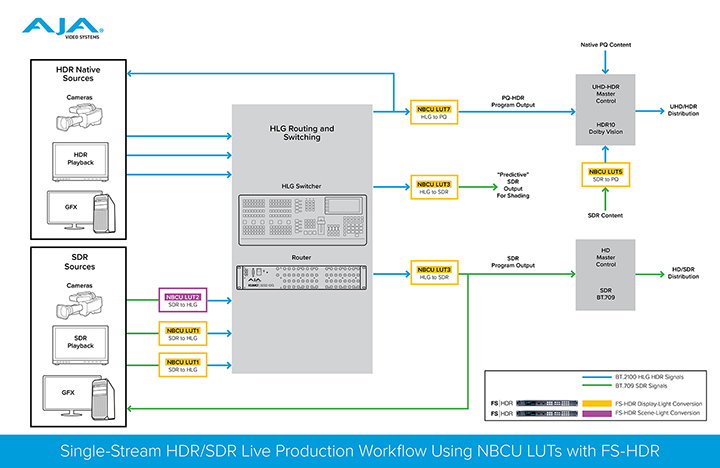
3D LUT Uploads and
Dynamic LUT Support
3D LUTs place color and luma in a 3D space, a much more representative way of how color works in the real world and useful for capturing and relaying more complex color grades than 1D LUTs.
FS-HDR supports uploads of user created 3D LUTs (33 point .cube format), with the ability to store and recall as needed through the FS-HDR’s simple visual GUI. This is ideal for bringing a standard desired look to a production, applying a creative LUT previously designed for the sake of the project, or potentially loading a film emulation LUT for a particular look.
- Upload using web GUI
- 33 point .cube format
- Store up to 10 LUTs
- Utilizes 33 point Tetrahedral 3D LUT Interpolation
FS-HDR also supports Dynamic LUT uploads from 3rd party software for live playout, with the ability to see changes as you implement them.
Single Channel Dynamic LUTs support 4K resolutions while Four Channel Mode supports Multi-Channel HD workflows, with integration support for TVLogic’s WonderLookPro and Pomfort’s LiveGrade Pro grading software for continuous real time LUT updates.
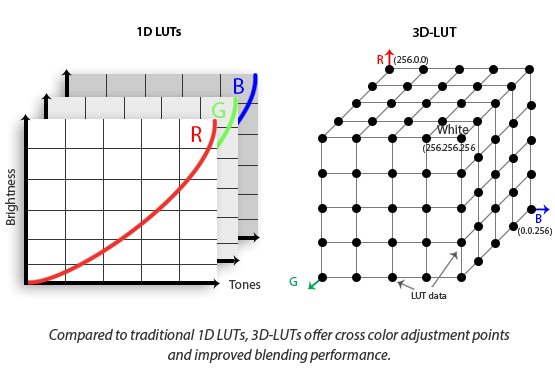
FS-HDR and WonderLookPro
Dynamic LUT support for both Single Channel and Multi-Channel workflows

FS-HDR and LiveGrade Pro
Dynamic LUT support for both Single Channel and Multi-Channel workflows
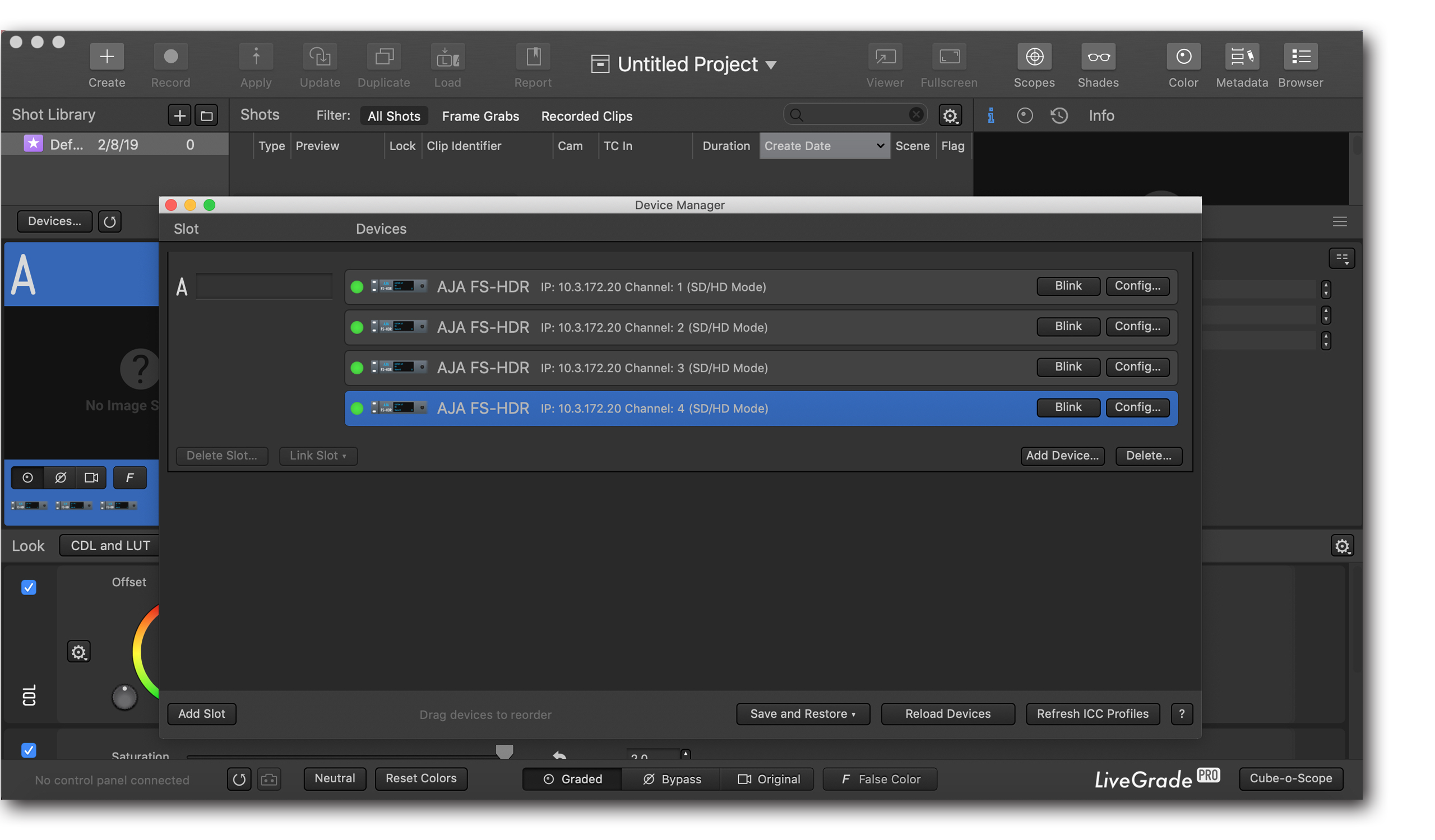
SDR Preview Mode
The Colorfront Engine SDR Preview Mode allows a user to quickly see what an HDR output will look like if it were converted to SDR by an FS-HDR. This is extremely useful in functions like camera shading, where the operator is making adjustments to an HDR camera while viewing the image on an HDR display. A key question is “what will this picture look like when down-converted to SDR?” The FS-HDR’s unique SDR Preview Mode provides a fast way to answer this question without requiring an HDR to SDR equipment chain or reconfiguring the existing HDR monitor.
When SDR Preview is enabled, the Colorfront Engine maps the video into the currently selected HDR space (PQ or HLG), but with values that will exactly represent the SDR image. This eliminates the time normally required to change the output format to SDR and the wait for the display to reconfigure. By simply controlling the on/off state of SDR Preview (from the front panel, Web GUI, or GPI), the operator can make quick, glitch free A/B comparisons of the HDR and SDR images.
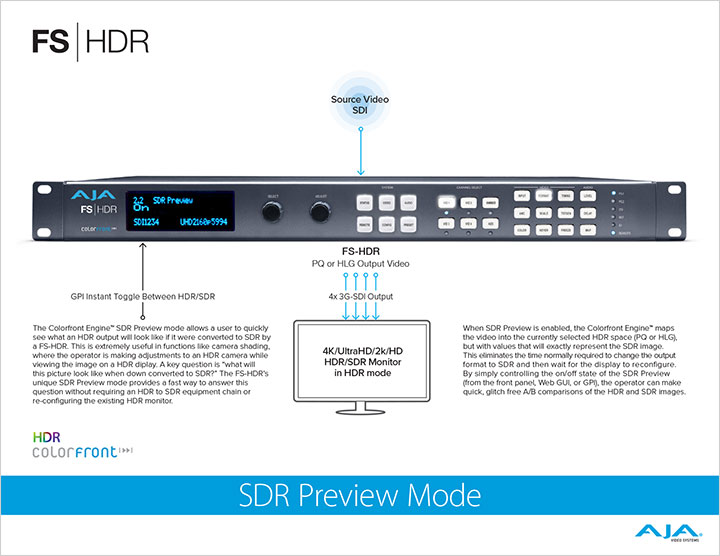
HDR Workflows for UltraHD and HD with FS-HDR
FS-HDR opens a range of exciting possibilities for the integration of HDR within a range of workflows:
- Converting from a house HDR standard to a delivery HDR standard.
- Converting from a camera OETF to a house HDR standard.
- Converting from HDR standard to SDR for delivery or monitoring.
- Converting SDR camera output to a house HDR standard.
- Converting SDR sources to HDR for integrating into an HDR program.
- Converting HD SDR BT.709 sources to UltraHD HDR BT.2020.
- Converting UltraHD HDR BT.2020 sources to HD SDR BT.709.
- Converting source inputs to Sony S-Log3 S-Gamut3.
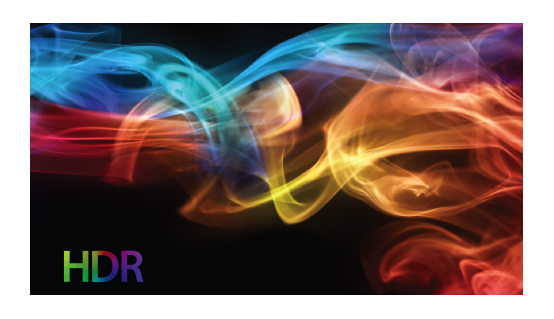
Single Channel Mode
4K/UltraHD Conversion Power with simultaneous 2K/HD outputs.
4K/UltraHD delivery, processing and synchronization is fast becoming the next standard, and FS-HDR gets you there with a wealth of digital video connectivity including Quad 1.5G, Dual 3G, Quad 3G with built in BNC connectors and 12G/6G over optional 12G-SDI HD-BNC and 12G-SDI LC Fiber SFP modules.
In Single Channel Mode, FS-HDR will up-convert your HD or SD materials to 4K/UltraHD or down-convert your 4K/UltraHD to HD, and supports a huge array of audio channels over Embedded SDI, AES, and MADI for an incredible 272×208 matrix of audio processing capabilities.
Enhanced Single Channel Mode offers simultaneous 4K/UltraHD and 2K/HD outputs for Single Master HDR workflows. In this Mode, HDR processing can be performed on true 4K or UltraHD signals and down-conversion with HDR processing is available for HD HDR or HD SDR needs via the SDI monitor output.
The channel’s color transform can be configured for Colorfront Engine TV Mode, Colorfront Engine Live Mode, Colorfront Engine Film Mode, BBC HLG 3D LUTs, NBCU 3D LUTs, User 3D LUTs, or Dynamic LUT Mode to accomplish the desired HDR transform.
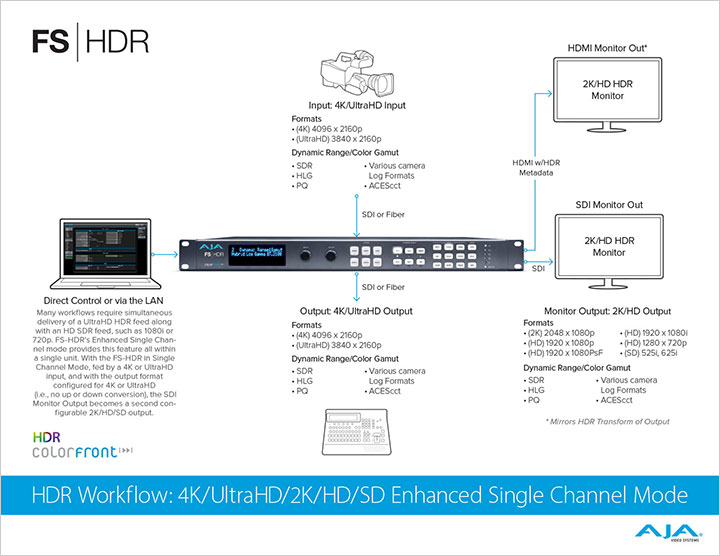
Four Channel Mode
Multi Channel HD HDR Processing.
In Four Channel Mode FS-HDR provides incredibly powerful Multi-Channel conversion with up to four channels of simultaneous HDR processing for 2K/HD and SD signals. Powerful conversion processing also allows Region of Interest (ROI) scaling, color correction, proc amp controls, motion adaptive deinterlacing and much more.
Each channel can be independently configured for Colorfront Engine TV Mode, Colorfront Engine Live Mode, Colorfront Engine Film Mode, BBC HLG 3D LUTs, NBCU 3D LUTs, User 3D LUTs, or Dynamic LUT Mode to accomplish the desired HDR transform.
In Four Channel Mode you can also bring in a single HD source and process four separate outputs from it, each with their own HDR/SDR transformations.
Multi-channel density in a 1RU Chassis conserves space, power, and weight.
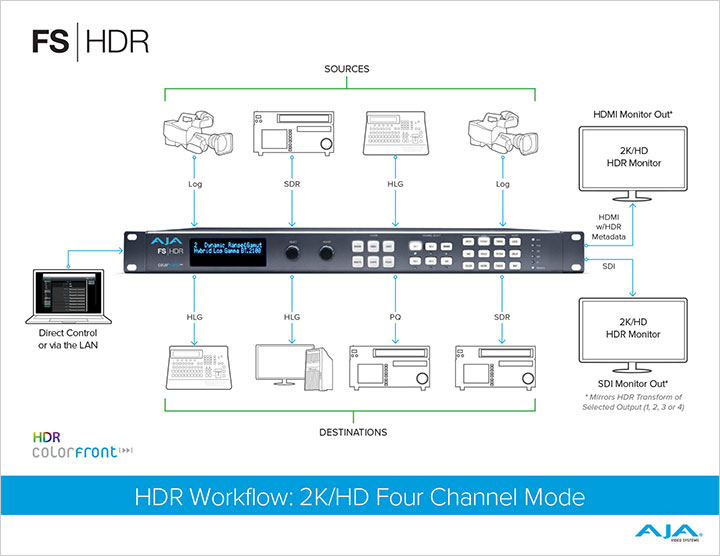
Incredible Digital Connectivity
Video and Audio deserve the connectivity and bandwidth required to meet the demands of your projects.
FS-HDR utilizes standard BNC as well as optional SFP inputs and outputs to integrate easily into a variety of workflows and facilities with support for SDI workflows all the way up to 12G.
FS-HDR has Coax and Fiber* inputs and outputs to accept 4K/UltraHD/2K/HD/SD resolution SDI signals in Single Channel Mode. In Four Channel Mode 2K/HD/SD inputs can be routed to multiple locations simultaneously without the need for any external signal distribution.
A looping Reference Input allows the FS-HDR to be locked to your house reference signal for rock solid stability.
Digital Audio can be disembedded and embedded between SDI, MADI, and AES for an incredible array of routing possibilities
* SFP inputs and outputs are optional.

Up, Down, Cross-Conversion
Moving to 4K is never an instant change. Legacy signals and archival material need to be integrated into the 4K environment while 4K/UltraHD sources need to be down-converted for current 2K/HD pipelines.
Utilizing AJA’s remarkable conversion algorithms, FS-HDR supports up, down, cross-conversion from 2K/HD/SD to 4K or UltraHD video and back over 12G/6G/3G-SDI. Both Square Division (SQD) and Two Sample Interleave (2SI) pixel mapping formats are supported.
AJA’s powerful hardware conversion technology ensures the highest image quality for your productions. Key conversion features include:
- 4K/UltraHD/2K/HD/SD up, down-conversion
- SD/SD aspect ratio conversion
- HD/HD cross-conversion (720p/1080i)
All done in beautiful 10-bit with dedicated hardware.
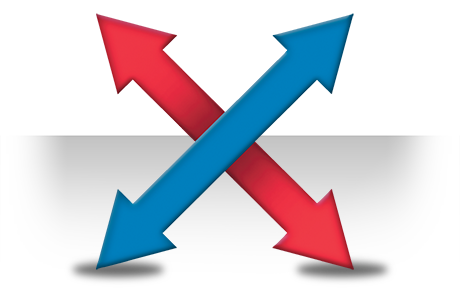
12G/6G HD-BNC and
Fiber SFP Options
FS-HDR’s SFP options include both 12G/6G-SDI HD-BNC and Fiber LC I/O options including single or dual channel and Single Mode or Multi-Mode options, allowing great SDI flexibility and fiber cable runs of up to 10 kilometers to be connected directly to the FS-HDR without the need for separate fiber to SDI conversion. Also available are 3G-SDI Fiber LC and SC SFP options.
Optional 12G/6G-SDI SFPs:
- HDBNC-2TX-12G: 12G/6G-SDI Dual Coax HD-BNC Transmitter
- HDBNC-2RX-12G: 12G/6G-SDI Dual Coax HD-BNC Receiver
- FIBERLC-1TX-12G: 12G-SDI Single Fiber LC Transmitter Single Mode
- FIBERLC-1RX-12G: 12G-SDI Single Fiber LC Receiver Single Mode
- FIBERLC-2TX-12G: 12G/6G-SDI Dual Fiber LC Transmitter Single Mode
- FIBERLC-2RX-12G: 12G/6G-SDI Dual Fiber LC Receiver Single Mode
Optional 3G-SDI Single Mode SFPs:
- FIBERSC-1-TX: 3G-SDI Single Fiber SC Transmitter Single Mode
- FIBERSC-1-RX: 3G-SDI Single Fiber SC Receiver Single Mode
- FIBERLC-1-TX: 3G-SDI Single Fiber LC Transmitter Single Mode
- FIBERLC-1-RX: 3G-SDI Single Fiber LC Receiver Single Mode
- FIBERLC-2-TX: 3G-SDI Dual Fiber LC Transmitter Single Mode
- FIBERLC-2-RX: 3G-SDI Dual Fiber LC Receiver Single Mode
Optional 3G-SDI Multi-Mode SFPs:
- FIBERLC-1TX-MM: 3G-SDI Single Fiber LC Transmitter Multi-Mode 850nm
- FIBERLC-1RX-MM: 3G-SDI Single Fiber LC Receiver Multi-Mode 850nm
- FIBERLC-2TX-MM: 3G-SDI Dual Fiber LC Transmitter Multi-Mode 850nm
- FIBERLC-2RX-MM: 3G-SDI Dual Fiber LC Receiver Multi-Mode 850nm
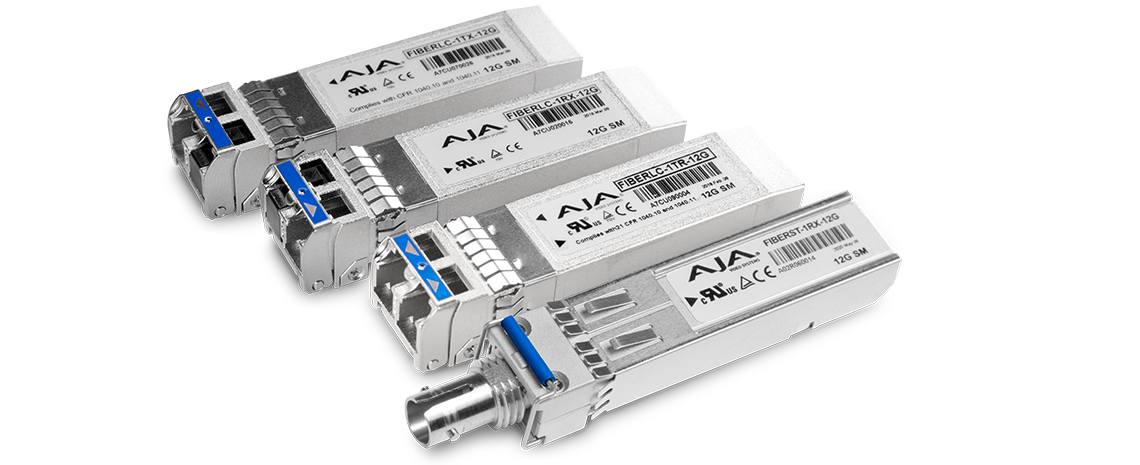
SKAARHOJ Rack Control Duo Panel
Integrated control of AJA’s FS family of frame synchronizers and converters with SKAARHOJ’s line of hardware based control panels. The new Rack Control Duo, developed in partnership with broadcast services provider NEP, supports AJA’s FS-HDR, FS4, FS2, and FS1 devices and is capable of ganging control of multiple FS products and processing channels together, making set-up and on-the-fly adjustments faster and easier for operators and engineers with a single tactile hardware control panel.
Ideal for any production environment involving multiple source signals, Rack Control Duo is an intuitive hardware control panel with tactile knobs and buttons to easily perform simultaneous adjustments across multiple AJA frame synchronizers.
Operators can also use the panel to recall and implement presets from previous setups across one or more FS devices. When used in conjunction with FS-HDR real time HDR/WCG converters, RGB color corrections can be performed via Rack Control Duo prior to HDR to SDR or SDR to HDR transforms, harnessing the power of AJA’s FS-HDR.

Tangent Element Kb Panel Support with Free AJA Control Link Software
The Tangent Element Kb twelve knob panel provides remote real time adjustment control of the FS-HDR’s Colorfront Engine parameters for HDR. This enables quick access and tactile control for key FS-HDR parameters in live production.
A free standalone app, FS-HDR Control Link, can be run on a local PC or Mac to provide communications between the Tangent panel’s USB interface and an Ethernet LAN, and ultimately connect to the FS-HDR. With v2.6 firmware and above and FS-HDR Control Link software, you can control Colorfront Engine parameters across multiple FS-HDRs and utilize 4x FS-HDRs simultaneously for 8K needs.
Control Link software can be found alongside the FS-HDR firmware under the Software panel on FS-HDR’s Support page and instructions for use are included in the FS-HDR manual.
Note: The Tangent Element Kb hardware is not sold through AJA and must be sourced through normal third party channels.

Remote Configuration and Control
FS-HDR is network ready and supports SNMP monitoring and web-based remote control. Units can be connected to any Ethernet network via the built-in 10/100/1000MB Ethernet port, allowing control and configuration of multiple FS units from any web browser on a connected computer. Configurations can be saved and applied to multiple units, ensuring consistency and quick configuration in large installs.
FS-HDR features unique over the network control of HDR settings from within its elegant interface available from any browser, anywhere.
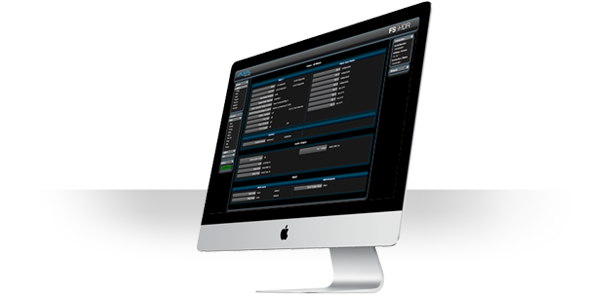
HDMI HDR Output
2K/HD HDMI output included, or use the Hi5-12G or Hi5-4K-Plus for 4K/UltraHD HDMI output
FS-HDR includes an HDMI 1.4 output for 2K/HD monitoring of your HDR conversions.
FS-HDR provides HDR infoframe generation to support HDR displays per HDMI v2.0b/CTA-861-G. The Monitor outputs (SDI and HDMI) support 2K/HD/SD formats, so when monitoring a 4K or UltraHD output, the monitor outputs (both SDI and HDMI) will be automatically down-converted to 2K or HD with HDR transforms respectively.
For full HDMI 2.0 to 4K/UltraHD displays, pair your FS-HDR with either an AJA Hi5-12G for 12G-SDI 4K/UltraHD or a Hi5-4K-Plus Mini-Converter for Quad 3G-SDI.
AJA’s Hi5-12G preserves your vision with pristine image fidelity and HFR support up to 60p for 4K/UltraHD 12G-SDI to HDMI 2.0 conversion needs. Both the Hi5-12G and Hi5-4K-Plus can generate HDR metadata in accordance with HDMI v2.0b/CTA-861-G.
Hi5-4K-Plus provides a simple monitoring connection from professional 4K devices like the FS-HDR, using Quad 3G-SDI, Quad 1.5G-SDI, or Dual 3G-SDI outputs to new displays with 4K/UltraHD HDMI 2.0 inputs, for cost effective monitoring for 4:2:2/4:4:4 60p professional workflows.

Massive Audio Flexibility
The growth of 5.1 and 7.1 audio has increased the number of audio channels that must be managed in a production, The MADI standard provides a convenient way to transport huge numbers of audio channels along a single cable, simplifying the cabling demands for broadcasters, mobile trucks and production. FS-HDR supports both fiber and coax MADI input and output. An internal 277×208 mono audio matrix allows you to route 1 to 1 or 1 to many with full routing of MADI, mixdowns, and all audio coming from SDI, fiber, and AES sources for an incredible amount of audio processing capability in a single box.
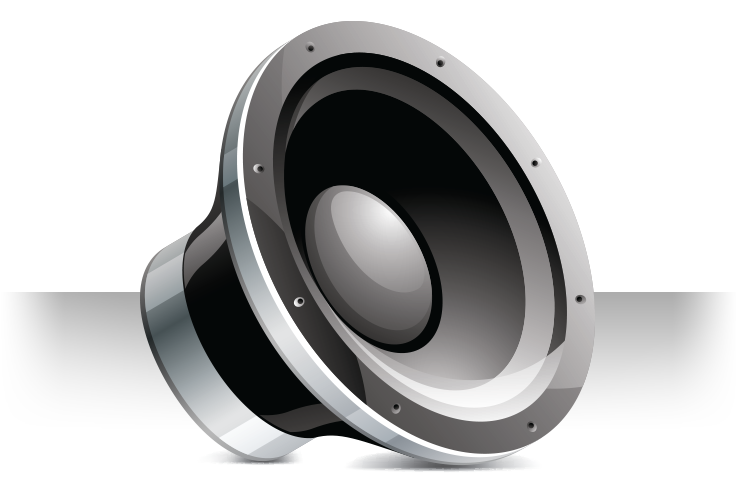
Closed Captioning Conversion
FS-HDR supports Closed Captioning and the conversion of Closed Captioning between 2K/HD/SD and 4K/UltraHD formats – including full conversion of CEA-608 and CEA-708 standards. FS-HDR can preserve Closed Captioning even when converting between formats, removing the need to reinsert Closed Captioning after conversion.
Active Format Description
Automatically sets Active Format Description information to match the converted signal. This means AFD information does not have to be inserted after conversion and provides accurate information for devices that understand AFD.
AJA Quick Start: FS-HDR
Watch this video to learn how to configure FS-HDR utilizing the FS-HDR’s built-in web interface for both 4K/UltraHD, and multi-channel HD HDR to HDR, SDR to HDR, and HDR to SDR needs.
Product Specification
HDR/WCG Real Time Processor
- HDR Conversions
- HDR to HDR
- HDR to SDR
- SDR to HDR
- Colorimetry
- BT.709 and BT.2020
Video Processing Transforms
- Each processing channel can independently select from:
- Colorfront Engine – TV Mode
- Colorfront Engine – Live Mode
- Colorfront Engine – Film Mode
- BBC HLG 3-D LUTs
- NBCU 3-D LUTs
- User 3-D LUTs
- Dynamic 3-D LUTs
Colorfront Engine (CFE) Advanced HDR Conversions
- Processing Based on Human Perception Model
- Perceptually optimized color volume remapping
- Preserves the original creative intent
- Parametric controls including HDR functions and color corrector
- TV Mode for applications such as television broadcast
- Live Mode for applications such as broadcast, OTT, A/V
- Film Mode for applications such as on-set camera preview and look creation
- Input Video Dynamic Range/Color Gamut
- SDR BT.709 100 Nits
- SDR Extended BT.709
- PQ BT.2020 1000 Nits
- PQ P3D65 1000 Nits
- Hybrid Log Gamma BT.2100
- HLG Extended BT.709
- HLG Extended BT.2100
- Sony S-Log3 S-Gamut3
- Sony S-Log3 S-Gamut3 Cine
- Sony S-Log3 BT.2020
- ARRI Log C Wide Gamut
- Panasonic V-log
- RED Log3G10 Wide Gamut
- Canon Log 2
- Canon Log 3
- ACEScct (Film mode only)
- Output Video Dynamic Range/Color Gamut
- SDR BT.709 100 Nits
- SDR Extended BT.709
- PQ BT.2020 1000 Nits
- PQ P3D65 1000 Nits
- Hybrid Log Gamma BT.2100
- HLG Extended BT.709
- HLG Extended BT.2100
- Sony S-Log3 S-Gamut3
- Sony S-Log3 BT.2020
- ARRI Log C Wide Gamut
- ACEScct (Film mode only)
- SDR Preview mode
- Ambient Light Compensation control
- PQ Output Nit level: 48-4000 Nit
- PQ Output P3 Colorspace Clamp
- Exposure, Color Temp, Tint controls
- TV Mode controls
- Highlight management: Knee Point, Knee Slope
- Color Correction: Lift, Gamma, Gain, Saturation
- Camera Correction: Exposure, Color Temp, Tint
- Live Mode controls
- Grading: Lift, Gamma, Gain,
- SDR Softness control
- ITU-R BT.2408 control
- Film Mode controls
- Grading space: LogC, ACEScct, or S-Log3
- ACES CDL: Offset, Power, Slope, Saturation
- A/B Look Selection
- A/B Look Mix
- MasterLook
- MasterBroadcast
- MasterLookBright
- MasterLookCool
- MasterLookLowCon
- MasterLookSoftColor
- MasterLookVivid
- MasterLookWarm
- MasterPastelD60
- MasterPastelD65
- Agfa
- ARRI K1S1
- Bleach
- ClassicFilm
- Ektachrome
- FilmBlended
- FilmBlendedLoCon
- FujiDI
- FujiXD
- GenericFilm
- Kodachrome
- ReversalClassic
BBC HLG 3-D LUT HDR Conversions
- Mathematical dynamic range mapping per ITU-R BT.2408
- SDR/BT.709 Scene Referred to HLG/BT.2100 v1.5
- SDR/BT.709 Scene Referred to HLG/BT.2100 Strict v1.5
- SDR/BT.709 Scene Referred UpMap to HLG/BT.2100 v1.5
- SDR/BT.709 Scene Referred UpMap to HLG/BT.2100 Strict v1.5
- SDR/BT.709 Display Referred to HLG/BT.2100 v.1.5
- SDR/BT.709 Display Referred UpMap to HLG/BT.2100 v1.5
- SDR/BT.2020 Display Referred to HLG/BT.2100 v1.5
- SDR/BT.2020 Display Referred UpMap to HLG/BT.2100 v1.5
- PQ 1000 Nits Display Referred to HLG/BT.2100 v1.5
- PQ 4000 Nits Display Referred to HLG/BT.2100 v1.5
- S-Log3/BT.2020 100% Scene Referred to HLG/BT.2100 v1.5
- S-Log3/BT.2020 200% Scene Referred(SR-Live) to HLG/BT.2100 v1.5
- HLG/BT.2100 to SDR/BT.709 Scene Referred v1.5
- HLG/BT.2100 to SDR/BT.709 Scene Referred Strict v1.5
- HLG/BT.2100 to SDR/BT.709 Display Referred v1.5
- HLG/BT.2100 to SDR/BT.709 Display Referred Super White v1.5
- HLG/BT.2100 to PQ 1000 Nits Display Referred v1.5
NBCU 3-D LUT Processing
- NBCU LUTs developed by NBCUniversal Media, LLC
- 1-NBCU_SDR2HLG_DL_v1, SDR UpMap to HLG using Display Light v1.0
- 2-NBCU_SDR2HLG_SL_v1, SDR to HLG using Scene Light v1.0
- 3-NBCU_HLG2SDR_DL_v1.1, HLG to SDR using Display Light v1.1
- 4-NBCU_SDR2PQ_DL_v1, SDR UpMap to PQ using Display Light v1.0
- 5-NBCU_PQ2SDR_DL_v1, PQ to SDR using Display Light v1.0
- 7-NBCU_HLG10002PQ_v1, HLG 1000 Nits to PQ v1.0
User 3-D LUT Processing
- Supports custom 33 point .cube format 3-D LUTs
- Tetrahedral LUT interpolation
- Configurable Colorspace, Scale, and HDR Transfer Characteristic
- Nonvolatile storage of 10 fixed LUTs
Dynamic 3-D LUT Processing
- Supports third party apps for automatic loading and display of 3-D LUTs
- Reflects dynamic changes in real time from source software
- Supported by Pomfort Livegrade Pro
- Supported by TV Logic WonderLookPro
Modes of Operation
- Four Channel Mode – Four Independent 2K, HD, or SD Video Processors
- Single Channel Mode – One 4K, UltraHD, 2K, HD, or SD Video Processor
- Enhanced Single Channel Mode – One 4K, UltraHD Video Processor with simultaneous 4K/UltraHD and 2K/HD/SD outputs
Video Formats
- (4K) 4096 x 2160p 23.98, 24, 25, 29.97, 30, 50, 59.94, 60
- (4K) 4096 x 2160PsF 23.98, 24, 25, 29.97, 30
- (UltraHD) 3840 x 2160p 23.98, 24, 25, 29.97, 30, 50, 59.94, 60
- (UltraHD) 3840 x 2160PsF 23.98, 24, 25, 29.97, 30
- (2K) 2048 x 1080p 23.98, 24, 25, 29.97, 30, 50, 59.94, 60
- (HD) 1920 x 1080p 23.98, 24, 25, 29.97, 30, 50, 59.94, 60
- (HD) 1920 x 1080PsF 23.98, 24, 25, 29.97, 30
- (HD) 1920 x 1080i 50, 59.94, 60
- (HD) 1280 x 720p 50, 59.94, 60
- (SD) 625i 50
- (SD) 525i 59.94
- YCbCr, 4:2:2, 10-bit
Video Input Digital
- 4x 3G-SDI inputs, 4x BNC
- 4x 12G-SDI inputs, 4x Fiber or HD-BNC (optional SFP modules)
- SFP coax module, 12G/6G-SDI, dual HD-BNC
- SFP fiber module, 12G/6G-SDI, Single Mode, dual LC or single LC, SMPTE-297
- SFP fiber module, 3G-SDI, Single Mode, dual LC, single LC, or single SC, SMPTE-297
- SFP fiber module, 3G-SDI, Multi-Mode, dual LC or single LC, SMPTE-297
- 12G/6G/3G/HD/SD, SMPTE-259/292/424/2081/2082
- Single Link 12G/6G-SDI (with optional SFP module)
- Quad Link 3G-SDI Level A or B-DL (4x 3G), SMPTE-425-5
- Dual Link 3G-SDI Level B-DS (2x 3G), SMPTE-425-3
- Single Link 3G-SDI Level A, B-DL, or B-DS, SMPTE 425
- Quad Link HD-SDI (4x 1.5G)
- Dual Link HD-SDI (2x 1.5G), SMPTE-372
- Single Link HD/SD
- Quadrant (Square Division) or 2SI (Two Sample Interleave) 4K/UltraHD input pixel mapping
- 8x 1 selector feeds video processor(s)
Video Output Digital
- 4x 3G-SDI outputs, 4x BNC
- 4x 12G-SDI outputs, 4x fiber or HD-BNC (optional SFP modules)
- SFP coax module, 12G/6G-SDI, dual HD-BNC
- SFP fiber module, 12G/6G-SDI, Single Mode, dual LC or single LC, SMPTE-297
- SFP fiber module, 3G-SDI, Single Mode, dual LC, single LC, or single SC, SMPTE-297
- SFP fiber module, 3G-SDI, Single Mode, dual LC, SMPTE-297
- SFP fiber module, 3G-SDI, Multi-Mode, dual LC or single LC, SMPTE-297
- 12G/6G/3G/HD/SD, SMPTE-259/292/424/2081/2082
- Single Link 12G/6G-SDI (with optional SFP module)
- Quad Link 3G-SDI Level A or B-DL (4x 3G), SMPTE-425-5
- Dual Link 3G-SDI Level B-DS (2x 3G), SMPTE-425-3
- Single Link 3G-SDI Level A, B-DL, or B-DS, SMPTE-425
- Quad Link HD-SDI (4x 1.5G)
- Dual Link HD-SDI (2x 1.5G), SMPTE-372
- Single Link HD/SD
- Quadrant (Square Division) or 2SI (Two Sample Interleave) 4K/UltraHD output pixel mapping
Monitor Output Digital
- Monitor Output is a copy of the Main Output
- 1x BNC, 1x 3G-SDI output
- 3G-SDI/HD/SD, SMPTE-259/292/424, 10-bits
- 4K/UltraHD automatically down-converted to 2K/HD
- SDI Monitor Output is configurable when FS-HDR is operating in Enhanced Single Channel Mode
- Video Formats
- (2K) 2048x1080p 23.98, 24, 25, 29.97, 30, 50, 59.94, 60
- (HD) 1920x1080p 23.98, 24, 25, 29.97, 30, 50, 59.94, 60
- (HD) 1920x1080PsF 23.98, 24, 25, 29.97, 30
- (HD) 1920x1080i 50, 59.94, 60
- (HD) 1280x720p 50, 59.94, 60
- (SD) 625i 50
- (SD) 525i 59.94
- Transforms
- Colorfront Engine – TV Mode, select from 9 Conversions
- Colorfront Engine – Live Mode, select from 10 Dynamic Range & Gamut settings
- Colorfront Engine – Film Mode, select from 11 Dynamic Range & Gamut settings
- BBC HLG LUTs, select from 17 LUTs
- NBCU LUTs, select from 6 LUTs
- USER LUTs, select from 10 LUTs
- Video Formats
- 1x HDMI, 1x HD output
- 2K/HD/SD, HDMI v1.4a
- 4K/UltraHD automatically down-converted to 2K/HD
- HDR Infoframe generation to support HDR displays per HDMI v2.0b and CTA-861-G
- Crop control
Video Processing
- Motion adaptive deinterlacer
- Proc amp controls
- Color corrector
- Legalizer
- Frame rate conversion/film cadence removal/insertion (3:2, 1:2, 2:1, 2:3)
- Adjustable delay 0-20 frames with H and V timing controls in lines and pixels
- Freeze (manual or on input signal loss) to black or last good frame
- Matte generator for background fill
- Video test generator with SDR and HDR patterns
- Nominal video delay HD/SD, 2 frames (LFR), 4 frames (HFR)
Ancillary Data
- All embedded ANC packets pass-through when output format equals input format
- Ancillary Timecode (LTC, VITC1, VITC2) translation and pass-through for wide range of conversions
- SCTE-104 and Closed Captioning pass-through for wide range of conversions
- Closed Captioning conversion (CEA-608/CEA-708)
- AFD input detection, down-convert control, and output pass-through or overwrite
- Configurable SDI output VPID for Colorimetry and Transfer Characteristic
Format Conversion
- Convert any supported input format to any supported output format, within the same frame rate family. These three families are:
- 59.94, 29.97, 23.98
- 50, 25
- 60, 30, 24
Scaling
- Supported in 2K/HD/SD formats
- Zoom in and out
- Reposition
- Region of Interest (ROI)
Up-Conversion
- Hardware 10-bit
- Zoom 14:9: results in a 4:3 image zoomed slightly to fill a 14:9 image with black side bars
- Zoom Letterbox: results in image zoomed to fill fullscreen
- Zoom Wide: results in a combination of zoom and horizontal stretch to fill a 16:9 screen; this setting will introduce a small aspect ratio change
Down-Conversion
- Hardware 10-bit
- Anamorphic: fullscreen
- Letterbox: image is reduced with black top and bottom added to image area with the aspect ratio preserved
- Crop: image is cropped to fit video output format
Aspect Ratio Conversion for SD to SD
- Letterbox: Transforms SD anamorphic material to a letterboxed image
- H Crop: Produces a horizontally stretched effect on the image; transforms anamorphic SD to full frame
- SD Pillarbox: Produces an image in the center of the screen with black borders on the left and right sides and an anamorphized image in the center
- V Crop: Transforms SD letterbox material to an anamorphic image
Audio Input Digital
- 48 kHz sample rate
- 8x SDI embedded inputs (16-Channels each)
- 128-channels, 24-bit (20-bit SD), SMPTE-272/299
- 8x balanced AES inputs (16-Channels), 1x DB-25
- 16-channels, 24-bit, AES-3
- 2x MADI inputs, 1 BNC, 1x ST Fiber
- 128-channels, 24-bit, AES-10
Audio Output Digital
- 48 kHz sample rate
- 1x SDI embedded output per Video Processor (16-Channels each)
- 16-channels (in single Video Processor mode), 24-bit (20-bit SD), SMPTE-272/299
- 64-channels (in four Video Processor mode), 24-bit (20-bit SD), SMPTE-272/299
- 8x balanced AES outputs (16-Channels), 1x DB-25
- 16-channels, 24-bit, AES-3
- 2x MADI outputs, 1x BNC, 1x ST Fiber
- 128-channels, 24-bit, AES-10
Audio Processing
- 277 x 208 mono audio matrix, route 1 to 1, 1 to many
- Inputs: 128 embedded, 16 AES, 128 MADI, 2 stereo mixdowns, 3 tone generator
- Outputs (Four Channel Mode): 16 AES, 128 MADI, 64 embedded
- Outputs (Single Channel Mode): 16 AES, 128 MADI, 16 embedded
- Input adjustment controls for each channel
- Gain +18 to -18 dB in 0.5 dB steps
- Phase invert
- Input adjustment controls for each channel pair
- Delay -16ms to +1sec in 20.8 us steps
- Audio delay can automatically follow video timing delay adjustments
- Two independent 5.1 or 7.1 to stereo mixdown processors with gain adjust
- High quality Sample Rate Conversion supported on all audio inputs
- SRC bypass for non-PCM audio (e.g. Dolby E, AC-3, etc)
- Audio tone generator (mute, 400 Hz, 1 kHz)
Reference Input
- External, 2x BNC
- Looping, nonterminating
- Blackburst or tri-level sync
Genlock
- Lock to External Reference
- Lock to SDI input 1 thru 8
- Free run based on Temperature Compensated Crystal Oscillator
Network Interface
- 1x RJ-45, 10/100/1000 Ethernet
- Embedded web server for remote control
- REST Interface
- SNMP
User Interface
- Display
- Keypad with status LEDs
- Two rotary/push knobs
- Comprehensive alarm indicators
FS-HDR Control Link Application
- Real time remote control of Colorfront Engine Parameters (Live Mode only)
- Supports Tangent Kb USB 12 knob panel
- Ganging feature provides simultaneous control of multiple FS-HDRs in Single Channel Mode
- Enables 8K HDR transform pipelines when controlling 4x FS-HDR simultaneously
Presets
- Four Channel and Single Channel Mode each support 40 system level Presets
GPI
- 1x 25-pin D-Connector
- Four optically isolated GPI inputs
- Four optically isolated GPO outputs
Size (w x d x h)
- 17.5” x 16.0” x 1.75” (1RU) (444.5 x 406.4 x 44.45 mm)
Weight
- 7.9 lb (3.6 kg)
Power
- 100-240 VAC 50/60 Hz (Dual, redundant power supplies), 55W typical; 70W max.
Environment
- Safe Operating Temperature: 0 to 40 C (32 to 104 F)
- Safe Storage Temperature (Power OFF): -40 to 60 C (-40 to 140 F)
- Operating Relative Humidity: 10-90% noncondensing
- Operating Altitude: <3,000 meters (<10,000 feet)

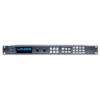

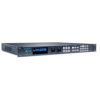
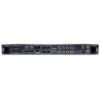
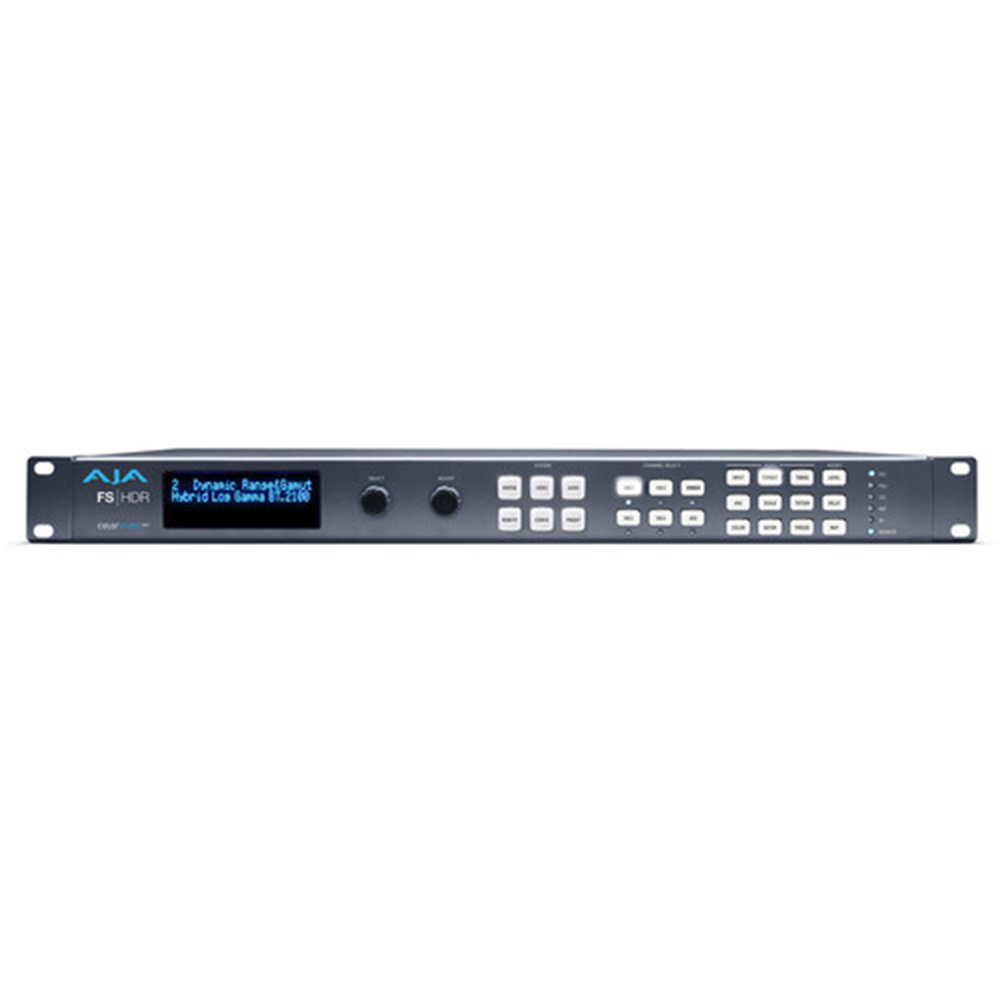


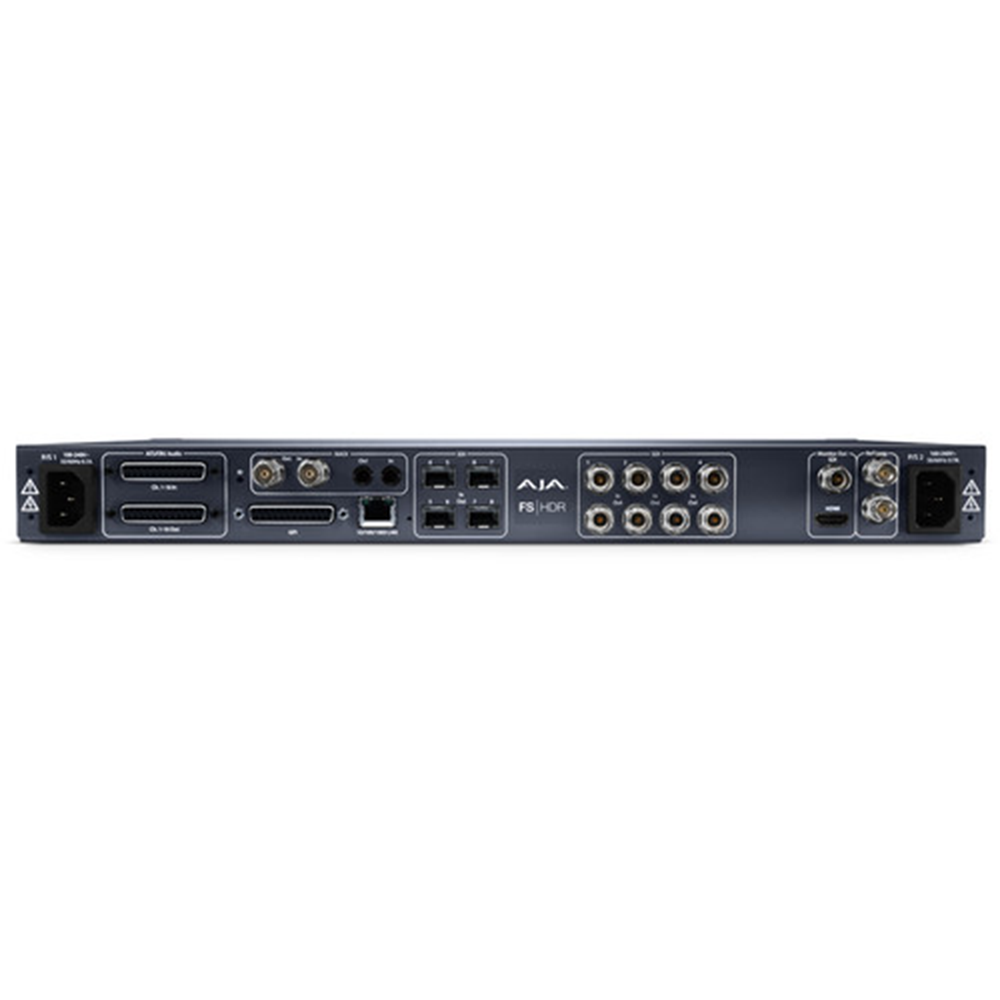






Reviews
There are no reviews yet.